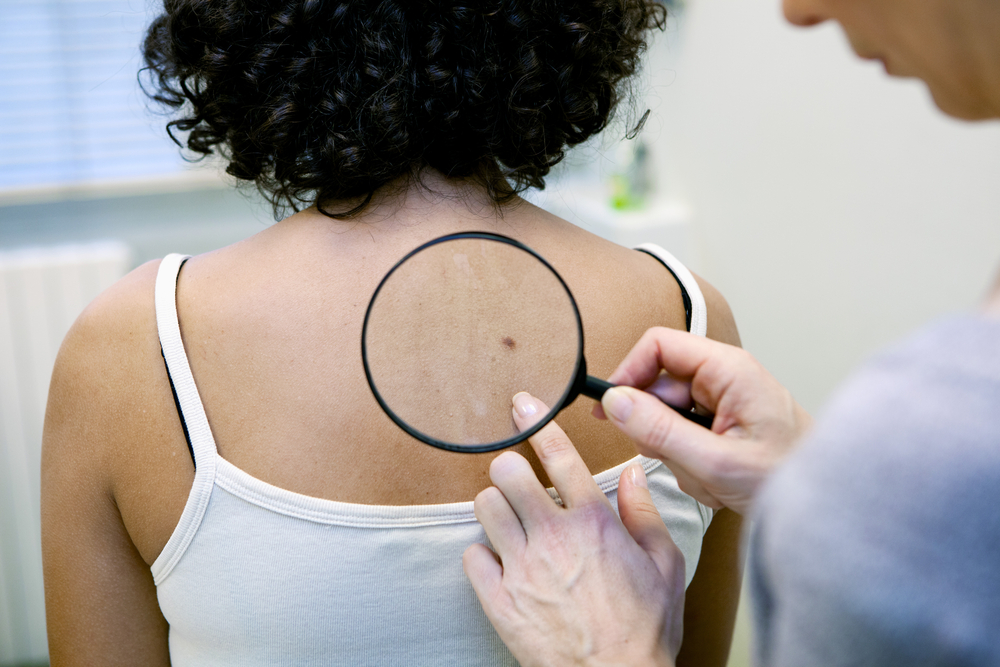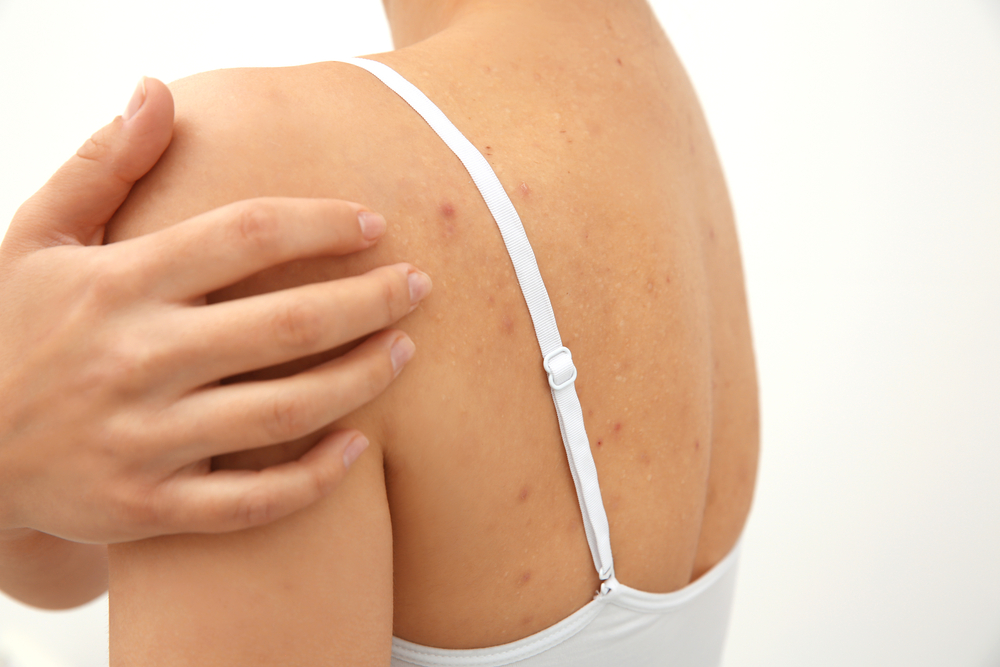- Skin cancer is the most common type of cancer in the United States.
- Regular examinations save lives by detecting skin cancer early.
- Those who are at an increased risk should do a self-exam every three months, and see a doctor once a year.
- Even melanoma, the most deadly skin cancer, can be cured if caught soon enough.
One in five Americans will develop skin cancer in their lifetime, according to the American Academy of Dermatology (AAD).
Prevention is key — here’s what you should expect during a skin cancer screening.
What is a skin cancer exam?
A skin cancer examination is when a primary care doctor or dermatologist performs a detailed check of a patient’s skin to look for lesions like moles, freckles, or other blemishes that might be cancerous.
The exam is usually performed in a doctor’s office. It can also take place during a skin cancer prevention event, in a public area like a park or shopping mall.
How can I prepare for a skin cancer exam?
Although you should do frequent examinations on your own, it’s also a good idea to give your skin a good look-over in front of a mirror just before the skin examination with your doctor.
Make a note of your moles, freckles, and other spots, especially ones you’re concerned about or have never noticed before.
If you’re not sure what to do, the Skin Cancer Foundation has a guide on how to perform a self-exam.
What can I expect during a skin cancer exam?
Your doctor will take your medical history and ask if you have any spots that concern you. You will need to remove all of your clothing; the nurse will provide you with a gown to wear.
Your doctor will then examine you from head to toe, using a special magnifying glass to check any moles or other spots you may have.
Will my doctor examine my entire body?
A thorough skin exam should cover your entire body, including your private areas, but some doctors will not do this unless you ask them to check something specific.
How thorough the examination is will also depend on where it’s taking place. An exam in a private setting like a doctor’s office can be more thorough than one that’s done during a public skin cancer screening event.
How long with the exam take?
Most examinations take about 10 to 20 minutes. First time exams may take slightly longer. It may also take longer if you’ve already had malignant lesions removed, or if you have one of the risk factors for developing the disease.
What if the doctor finds something suspicious?
Should your doctor find a suspicious lesion, he or she may simply observe it for changes over a period of time or take photographs of it to have on file for comparison.
Most commonly, however, doctors like to perform biopsies, which involve taking a sample of skin to be examined in the lab for the presence of cancer cells. Most biopsies require only a local anesthetic applied to the lesion itself and surrounding tissue. It generally takes between 7 to 10 days to receive the results.
There are four methods for taking biopsies:
- Shave biopsy – The doctor shaves off a slice of the mole or spot.
- Punch biopsy – The doctor uses a special circular blade to cut into and take a sampling of all layers of the skin.
- Excisional biopsy – The doctor removes the suspicious lesion altogether; this is usually done in the case of a small lesion.
- Incisional biopsy – The doctor removes a piece of a larger lesion to send to the lab for testing.
Are skin cancer exams covered by insurance?
Unfortunately, the Affordable Care Act (ACA) does not mandate that skin cancer exams be covered by health insurance. Talk to your insurer to find out if your specific policy offers coverage.
If your policy does not cover skin cancer screenings, The American Academy of Dermatology (AAD) offers free skin checks through its SPOTme program. Other organizations, such as the American Society for Dermatologic Surgery and the Skin Cancer Foundation, also offer free skin cancer screenings.
How often should you get a skin cancer exam?
Most doctors advise that you should perform self-exams once every three months and have a doctor’s exam once a year, particularly if you have had skin cancer in the past or are at risk for it.
What are the warning signs of skin cancer?
Skin cancer is tied to sun exposure and often presents as changes in your skin, such as spots that weren’t there before or a mole that looks different than it did in the past.
Skin cancer can appear anywhere on the body, even in areas that are rarely exposed to the sun, such as the soles of your feet or your private areas. For this reason, you should always check your body thoroughly.
The following are changes that could signal skin cancer:
- A flaky, crusty sore that does not heal
- A patch of scaly skin
- A sore that frequently bleeds or oozes
- A bump or lump that hurts or itches
» The Fitzpatrick skin type system is used to categorize skin to indicate susceptibility to sun damage. Knowing your Fitzpatrick skin type can help prevent skin cancer.
What does a melanoma look like?
Follow the ABCDE rule to recognize moles that may be melanoma, the deadliest of all skin cancers:
- Asymmetry – The mole appears uneven; its two halves are not the same.
- Border – The edges of the mole are jagged, or the color bleeds into the surrounding skin.
- Color – The mole’s color varies, with pigments including brown, black, or even blue, red, and white.
- Diameter – The mole is larger than ¼ of an inch across, larger than a pencil eraser.
- Evolving – The mole is changing in some way; it may be growing or changing shape or color.
Most of your moles will likely look and feel very similar to one another. Should you find a mole that is in some way different from the rest, you may have found an “ugly duckling,” and you should see your doctor about it as soon as possible.
What skin conditions can be precancerous?
The following conditions do not start out as cancer but may become cancer if left untreated. Should you have any of these, see your doctor.
- Actinic keratosis refers to scaly patches of skin that usually appear on areas of the body frequently exposed to the sun, such as the face, hands, and neck. Although most of these lesions will not become cancerous, doctors prefer to remove them as a preventative measure. People with light skin, blond or red hair, and light eyes are the most at risk for developing actinic keratosis.
- Actinic cheilitis is a condition similar to actinic keratosis, but it affects the lips only. Another name for it is “farmer’s lip” because it affects people who frequently work in the sun for prolonged periods. It consists of scaly areas on the lips or, in rare cases, swelling accompanied by a loss of the border between the lips and the skin.
- Dysplastic nevi (atypical moles) are moles that meet any of the criteria of the ABCDE rule, that is they can be asymmetrical, have irregular borders, vary in color, be larger than ¼ of an inch in diameter, or are evolving. Although they may never turn into cancer, they should be watched carefully.
What are the different types of skin cancer?
There are three types of skin cancer. Luckily, the most common types, the non-melanoma skin cancers, are the least deadly and the likely to spread to other parts of the body.
With early detection, all skin cancers are curable, even melanoma, the most dangerous one of all.
Basal cell carcinoma (BCC)
Basal cell carcinoma (BCC) is the most common form of skin cancer. Fortunately, it is also the least likely of all skin cancers to spread to other organs. According to the Skin Cancer Foundation, there are more than 4 million cases of BCC in the United States every year.
BCC arises in the lowest part of the epidermis, or the outer layer of the skin. It often presents as sores or red, scaly patches on areas that receive frequent exposure to the sun. People with light skin, hair, and eyes are most at risk for BCC.
Squamous cell carcinoma (SCC)
Squamous cell carcinoma (SCC) is the second most common skin cancer, with more than one million cases in the United States every year. SCC affects the epidermis, or the outer layers of the skin, and frequently shows up as scaly areas of skin, sores, or as raised growths with a hollow in the center.
Although not usually deadly if caught early, should it remain untreated SCC can metastasize to other organs.
Melanoma
Out of all the types of skin cancer, melanoma is the most deadly, killing over 10,000 people in the United States every year. It gets its name because it arises in the melanocytes, or the cells of the epidermis that produce pigment.
Melanoma occurs when skin cells are corrupted by ultraviolet radiation, as from the sun or indoor tanning beds. It can look like a mole, or occur in an existing mole. If caught in its early stages, melanoma is almost always curable. If it is allowed to advance, it can spread to other parts of the body and lead to death.
Early detection and treatment are essential to a cure, which is why you should see your doctor regularly for a thorough skin cancer examination. This is especially important if you’re at increased risk for the disease.









